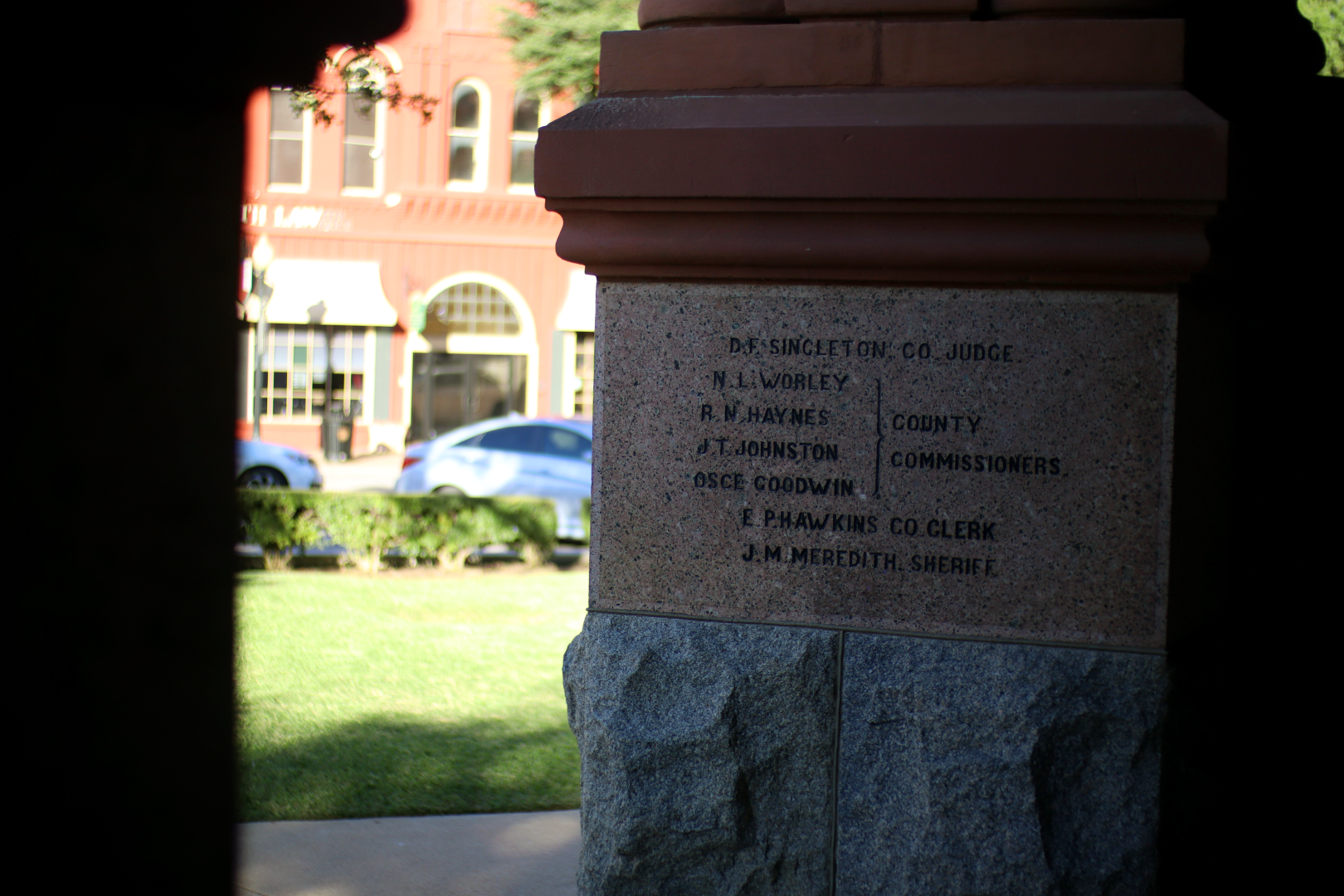
Although Texas did not suffer the physical destruction experienced by the rest of the South during the Civil War, the defeat of the Confederacy and the ensuing martial law imposed on former Confederate states during Reconstruction led to economic desolation. Ellis County commissioners were desperate for financial recovery of any kind, but the county had few faculties to attract new businesses or residents. A first attempt was made to build a grand courthouse in 1870, but the initiative proved unsatisfactory. The courthouse that was built at this site before the current one was a simple, rectangular, yellow limestone structure. That courthouse served its purpose, but it wasn’t exactly worthy of a postcard. By the 1890’s, the county knew it was time for a long-term solution.
At this time, a Texas courthouse “boom” was occurring, with counties across North Texas, including Ellis County, seeking to beautify their town squares with new courthouses designed by architect James Reily Gordon. Gordon was an advocate of the Richardson-Romanesque style, which incorporated Gothic artisanship into Renaissance-inspired structural design. Gordon’s unique architectural style had become world-famous, and he went on to represent Texas at the 1893 World Columbian Exposition in Chicago. Due to Gordon’s high demand, however, the cost of the courthouse he designed for Ellis County was excessive: $150,000 in 1893, which would correspond to ~$5-6 million today – an absolute indulgence for a county government facing financial hardship. When county commissioners discussed the possibility of raising property taxes or issuing a costly public bond to afford the new courthouse, controversy ensued. One of the county commissioners, O.A. Finley, refused to appear at Commissioners’ Court meetings in hopes of denying a quorum to make the controversial vote. The County & District Judge worked together to declare Finley’s seat vacant, and thus, the Ellis County Commissioners’ Court – absent one commissioner – approved the construction of a new courthouse based on designs purchased from Otto Kroeger, an affiliate of James Reily Gordon.
Just because the courthouse had been approved for construction, however, did not mean that the controversy had ended. Commissioner Finley campaigned against his former colleagues, and in the 1894 elections, Ellis County voters replaced every single county official. Realizing that Ellis County still needed a new courthouse, the new court hired architect Marshal Sanguinet to incorporate cost-cutting measures into the design of the building. Sanguinet’s most notable decision was to use locally-sourced pink sandstone as the major construction material for the courthouse. Not only was the pink sandstone less expensive, but it also made the new courthouse physically part of Ellis County in a very literal sense. Sanguinet was also the man who recommended Theodore Beilharz, the aforementioned stonemason who hired Germans who had studied the arcane techniques of Old Europe.
On the Fourth of July, 1895, a large ceremony was held as the cornerstones for the new Ellis County courthouse were laid. Note that there was not one – but two – cornerstones that were laid; facing the entrance, the one on the right credited the 1894 Commissioners’ Court with construction of the new building, whereas the one on the left represented the final chapter in the ongoing courthouse construction controversy. Members of the deposed 1893 Commissioners’ Court demanded credit for the courthouse, as it was they who had originally approved the design. The local Masonic Lodge paid for this second cornerstone to credit the 1893 court, and both cornerstones were laid during the ceremony to appease all parties. These two separate dedications have since been deemed the “dueling cornerstones,” representing both conflict and compromise – an integral part of any courthouse. Nevertheless, County Judge J.C. Smith declared that the new courthouse would forever be “a temple that will forever stand out as a milestone on the eminent highway tread by our generation” – and that, it has been, indeed. Construction of the courthouse lasted two years, and the building was formally opened to the public in the Spring of 1897. With the detailed artisanship of Beilharz’s stonemasons, the Ellis County courthouse has stood as the magnum opus of James Reily Gordon’s designs for more than a century and is said to be one of the most-photographed structures in Texas, besides the Alamo.